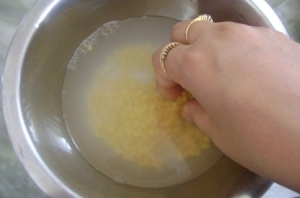“My child doesn’t eat well”. I think all parents have this thought at some point in their child’s life. I know I did. Today, I am going to share some facts and tips about toddler eating.
My older daughter was a very adventurous eater till she was about 1 year old. At 13 months she suddenly became picky. She went from eating a huge variety (eggs, grains, fruits, vegetables, yogurt) to eating only fruits, vegetables and yogurt. I was, of course, worried.
I later realized that this was very common. The main reasons why toddlers are picky are:
• Their rate of growth has slowed down.
• It is self protective
• Wrong perception of what toddler portion sizes should be.
In their first year, babies grow at a phenomenal rate. They gain 6 to 7 kgs in weight and 25 cms in length. Compare this to growth from 12 to 24 months: 2 kgs weight and 10 to 12 cms in length. This drastically slower rate of growth means toddlers just do not need as many calories.
Since they do not need many calories, naturally toddler portions are very small. One tablespoon per year of age is a good serving for a toddler. Good toddler meals may be:
One tablespoon of dal and one tablespoon of rice
One quarter chapatti with tablespoon vegetables
1/3 to 1/2 banana, or a tablespoon of cut fruits.
Toddlers are explorers! Their natural instinct to be picky protects them from accidently eating something poisonous. This is a much needed instinct from an evolutionary perspective when toddlers roamed free and had access to all kinds of plants.
Some tips to make toddler eating stress free:
1. Parent’s job: To offer healthy food and snacks every 2 to 3 hours. Toddlers need to eat 5 to 6 times a day. They cannot eat 3 large meals like adults.
2. Toddler’s job: choose what and how much to eat. Toddlers frequently go on food jags where they eat only one particular food for days. This is normal. Keep offering a variety anyway.
3. Include toddlers at family meal times. Children learn by imitating others. If parents model eating a variety of foods, toddlers will learn to enjoy a variety too.
4. Do not force, trick or distract a toddler to make them eat more. Letting toddlers eat as per their internal hunger cues is important. Only they know when they are hungry and full. Do not feed your toddler just so they eat more.
5. Try to look at their food intake over a week. Some days toddlers eat a lot, some days not so much. It should balance out over a week or 10 days.
6. Toddlers need consistent exposure (up to 15 times) to a new food before they are willing to try it. Just keep offering a wide variety of foods, without pressure for them to eat.
7. Don’t offer only favored foods or unhealthy food, just so that they eat something.
8. Keep in mind that a toddler’s stomach is the size of their closed fist. They need very small portions.
9. Serve very small portions at a time. One to two bites only. Too much food can be overwhelming. Once they finish then offer more.
10. Try different courses. So offer roti followed by veggies followed by fruits.
11. Do not get hung up on typical foods like eggs for breakfasts, roti for lunch etc. Toddlers do not care. Serve healthy pancakes for dinner instead .
12. Expect that one year olds will not be able to sit still for long periods. Keep meal times short.
13. Continue to breastfeed on demand. Breastfeeding covers a lot of nutritional gaps in toddlers. The World Health Organization recommends frequent on demand nursing till 2 years of age minimum. A toddler who is breastfeeding at least 3 to 4 times in a day does not need additional milk.
14. If not breastfeeding, limit milk intake to two cups in a day. Milk intake should not be more than 400 to 450 ml in a day. Too much milk will fill up the toddler leaving no room for food and possibly lead to iron deficiency anaemia.
15. Last but the most important. Read the book “My Child Won’t Eat” by Dr. Carlos Gonzalez. This book will change your entire perspective of how your child eats.
And what happened with my picky eater above? I just kept offering food. She continued to eat the fruits and veggies and rejecting everything else. I was discouraged so many times, but kept at it. And then, at 17 months a miracle happened. Overnight she started eating full chapattis. The day before she had refused any chapatti, the next day she ate a full one. Wow. I had never thought I would see this. There was no looking back after that. She started eating well at most meals. My second daughter did exactly the same. The only difference was I wasn’t worried! Keep offering food and they will eat what they need.
Happy parenting.
Aparna
18/1/2015
References:
1. Children’s eating attitudes and behaviour: a study of the modelling and control theories of parental influence Rachael Brown and Jane Ogden. Health Educ. Res. (2004)
2. Repetition counts: repeated exposure increases intake of a novel vegetable in UK pre-school children compared to flavour-flavour and flavour-nutrient learning.Caton SJ1, Ahern SM, Remy E, Nicklaus S, Blundell P, Hetherington MM. Br J Nutr. 2013 Jun
3. Influence of parental attitudes in the development of children eating behaviour.Scaglioni S1, Salvioni M, Galimberti C. Br J Nutr. 2008 Feb
4.http://www.healthychildren.org/English/ages-stages/toddler/nutrition/Pages/Serving-Sizes-for-Toddlers.aspx
5. Consumption of cow’s milk as a cause of iron deficiency in infants and toddlers. Ziegler EE. Nutr Rev. 2011 Nov.

 pani, it is better to give thick dal instead.
pani, it is better to give thick dal instead.